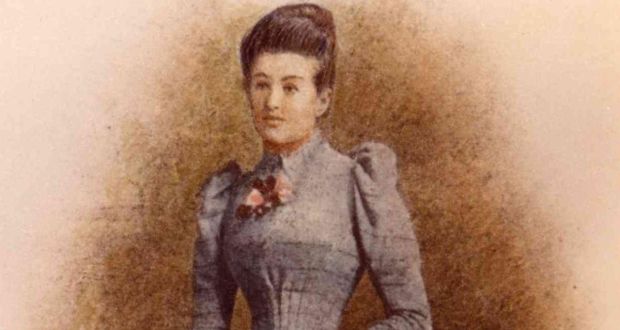The First Rose of Tralee
A novel by Patricia O’Reilly (Poolbeg, €15.99)
The fact file on ‘The Rose of Tralee’ claims that the words of the song were composed by Edmund Mordaunt Spencer, the music by Charles William Glover. However local tradition claims that it was written by William Pembroke Mulchinock, a wealthy Protestant, who fell in love with Mary O’Connor, a Catholic kitchen-maid.
Patricia O’Reilly develops her romantic novel from that local tradition. She expands the personas of William Mulchinock and Mary O’Connor. William becomes the eldest son of the landed Mulchinock family who also conducts a business in nearby Tralee.
He has a widowed mother, a sister and a brother. A poet with no inclination to manage the family estate, he takes charge of the businesses in Tralee. Immensely inspired by the rhetoric of Daniel O’Connell, he joins the Movement for the Repeal of the Act of Union.
Mary O’Connor is the daughter of Willie O’Connor, a shoemaker in Brogue Lane in Tralee. The eldest of the family, she is assiduous in caring for her frail mother, worn-out from child-bearing. She is also protective of her younger siblings.
When Mary’s mother is unable to continue working in the dairy of the Mulchinock family Mary takes her place, later serving in the kitchen. Finally, she is employed in the nursery teaching William’s nieces and it is there that he is smitten by her.
Historical context
The author skilfully inserts her story into its historical context. It was a time when Irish people were getting-up off their knees. Tiring from pleading for an amelioration of the injustices and inequality of the landlord regime, dissident tenants banded together, and under the cover of darkness, marauded across the countryside damaging the property and stock of landlords and sometimes attacking them.
They covered themselves in white sheets, hence they were known as the “Whiteboys”. After a clash with a group of them William dies.
The period was also dominated by Daniel O’Connell, fresh from his success in winning Catholic Emancipation he embarked on his Repeal Movement. There were the monster rallies, some of which William is described as helping to organise. And overall was the dark cloud of the Great Famine, bringing with it starvation, disease and the stench of death.
“In crafting her story, Patricia O’Reilly exhibits…an appreciation of the culture surrounding the practice of match-making”
The love that William and Mary shared faced immense challenges from the outset. William’s mother was determined that he should marry a suitable bride from his own class. The O’Connors were wary of Mary becoming involved with the ‘gentry’.
The problem is solved for the two families by an unfortunate event. During a riot following a “Repeal” meeting in Tralee a man is fatally stabbed. William is falsely accused of being involved. But before he could be arraigned in court he flees the country and settles in India.
Because her mother is dying Mary declines to accompany him but he promises to return to her as soon as possible.
However, it is decades before he does return and then only to witness Mary’s funeral.
In crafting her story, Patricia O’Reilly exhibits remarkable descriptive skill and, most importantly, a deep appreciation of the culture surrounding the practice of match-making.
There is no doubt that this excellent novel will eventually become part of the lore associated with Tralee’s Festival of the Roses.
Meantime it will be required reading for any young lady who aspires to be the next Rose of Tralee.


 The first Rose of Tralee Mary O’Connor.
The first Rose of Tralee Mary O’Connor. 